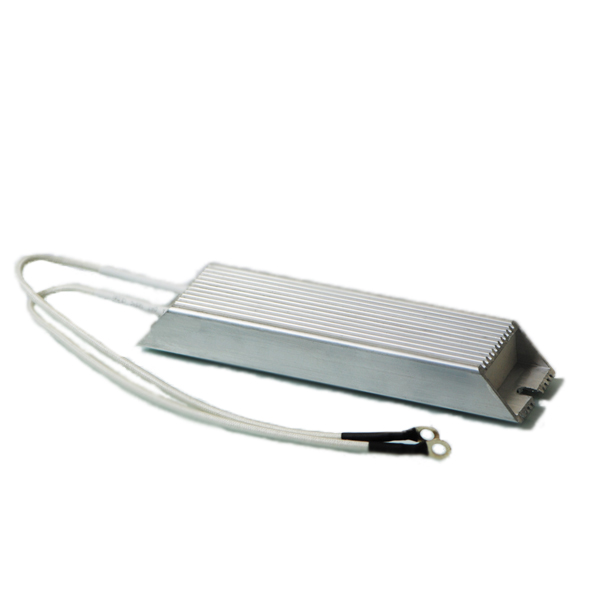Brake resistor
The Fluxcon brake resistor is characterized by its universal design: aluminum housing, fully enclosed, and equipped with molded-in cable. The sealing class is IP67, making it suitable for wet environments as well.
When an electric motor driven by a variable frequency inverter needs to resist or brake a load, energy will be generated. This is also known as regenerative operation. This generated energy will increase the DC bus voltage. If the DC bus voltage becomes too high, the frequency drive will go into a fault state. With a brake resistor connected to the variable-frequency inverter, the DC bus voltage can be limited by converting the excess electrical energy into heat when the voltage exceeds a certain threshold.
In applications such as lifting (lowering with load), rapid deceleration of the load (positioning), potentially conflicting motors (even if only for a short duration), and with large mass inertias (e.g., fans), it is important to consider the use of a brake resistor.
Selection brake resistor
For the selection of the brake resistor, the appropriate ohmic resistance is first and foremost important. For each frequency drive, a range of ohmic resistance is always specified. If the ohmic resistance is too low, the current can become too high, potentially causing damage to the variable-frequency inverter. If the ohmic resistance is too high, the frequency drive may not be able to dissipate enough electrical power effectively. The Ohm’s Law is applicable in this case: U=IxR and P=UxI.
Furthermore, the thermal power is important as well. The specified wattage of the brake resistor indicates the power that the resistor can continuously convert into heat for a duration of 2 minutes, with rest periods of 8 minutes (total cycle of 10 minutes). For advice on this matter, please contact the advisors at Fluxcon.
Braking intensity
Up to 15 kW, braking units are built-in in the Fluxcon 100 series. The built-in braking units can allow up to 50% of the nominal current of the drive to pass through to the brake resistor. An external braking unit can allow up to 150% of the nominal current to pass through to the brake resistor. Above 15 kW, there is no standard built-in braking unit present in the drive. In such cases where regenerative energy is involved, an external braking unit must always be used.
